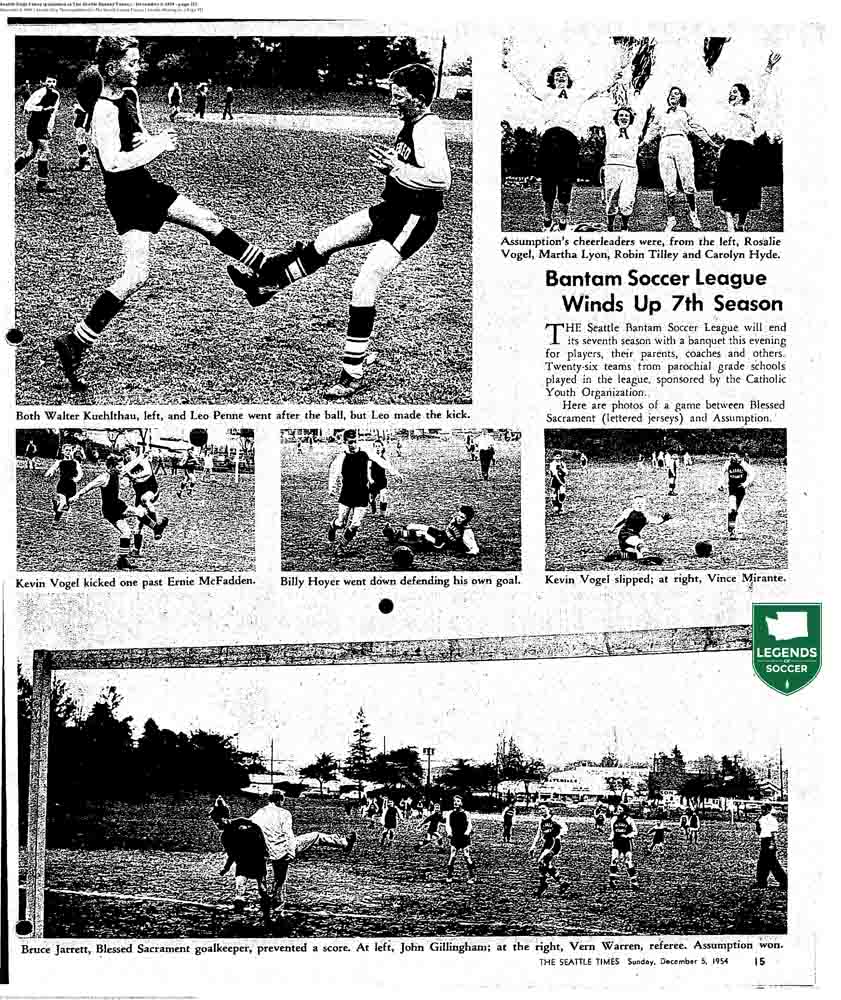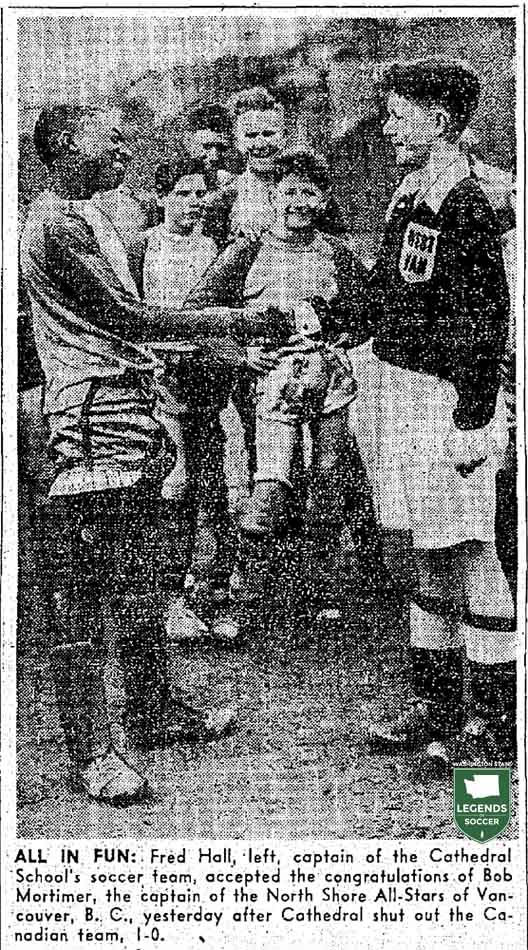1954 – Around the World and Close to Home
West Germany is allowed to rearm and admitted to NATO, England’s Roger Bannister is first to break the 4-minute mile, and both J.R.R. Tolkien’s Lord of the Rings and William Golding’s Lord of the Flies are published. The Supreme Court rules on Brown v. Board of Education, unanimously banning racial segregation in public schools. Wisconsin Senator Joseph McCarthy is censured by the Senate following the Army-McCarthy hearings, and the World Series (New York Giants sweep of Cleveland) is first broadcast in color. The battleship USS Missouri arrives in Seattle before its decommission in Bremerton, Dick’s Drive-Ins begins flipping burgers in Seattle’s Wallingford neighborhood, and Mountlake Terrace (pop. 5,000) incorporates.
Youth Is Served
Throughout America, soccer is viewed as a game for immigrants. Regional leagues from coast to coast are stocked with clubs whose identity is plain to see: Newark Portuguese, Brooklyn Hispano, New York Maccabi and the Los Angeles Scots. It is no different in Washington.
While commercial sponsors such as Scotty’s Fish and Chips and The Norselander restaurant might drop a gauzy veil, the thick British accents or Scandinavian names are obvious giveaways, and the likes of the Greek-Americans leaves nothing to the imagination. Over the next decade, more and more imports, particularly from Europe, will raise the level of play and interest in the Sunday docket. Still, the largest influx of new state league players will be those born in the United States.
Beneath the firm, well-established surface, junior programs are spreading roots on a more sustained basis following the upheaval of two world wars.
In the midst of World War II, the Associated Boys Clubs of Seattle started sprouting programs. Beginning in 1948, parochial schools were forming teams. As the Fifties approached the decade’s halfway line, young American males were earning more minutes and prompting more youth to take an interest in this heretofore foreign exercise. For the game to go forward, it needs renewable resources, and there were further indications in 1954 that fresh crops could be counted upon.
The Buchan Bakers, an outgrowth of the Fremont Boys Club, win the state cup competition, their second trophy in as many years. Far from a fluke, the Bakers are settling into a long run at the top of the state league. In Pierce County, Tacoma parochial schools field soccer teams for the first time, their winners meeting the Seattle area CYO champion.
Our friends north of the border continue to prove a fount of ideas and expertise. British Columbia coaches conduct clinics for Seattle Public Schools teachers, providing a base course for instruction during physical education classes. To aid in awakening the competitive spirit, the top teams from Vancouver and Puget Sound’s CYO leagues are pitted in a season-ending series for the J.R. Oldershaw trophy. It proves a gateway to exchanges and competitions to come.
 1953
1953





